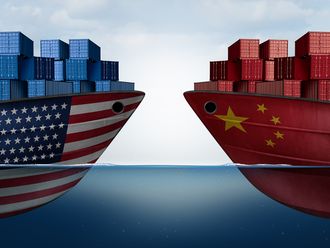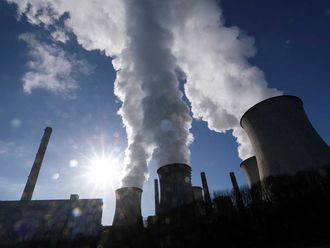The liberal international order managed to survive its life-and-death struggle with worldwide communism, but it may have met its match in the US President Donald Trump.
Which is to say that he really might dismantle the global trading system that has underpinned our historically unprecedented run of relative peace and prosperity in the post-war period one tweet at a time. Then again, he might not.
It depends. On what? Well, on him.
On the one hand, the fact that Trump likes to grab headlines first and let others figure out the details later, if ever, would seem to indicate that there’s a good chance this doesn’t escalate much beyond your typical social media spat.
Indeed, Trump’s initial announcement that he was putting tariffs on every country’s steel and aluminium exports has already been pared back to exclude Canada, Mexico, Europe, Australia, Argentina, Brazil and South Korea. Practically speaking, that means it has gone from targeting everybody to nobody but China, Japan, and Russia.
On the other hand, though, trade is just about the only issue that Trump has either had a consistent interest in or a position on his whole adult life. Long before he was railing against China and Mexico for their alleged unfair trade practices, he was saying much the same about Japan in the 1980s.
But just as important as this will-he-or-won’t-he is “how-he’ll”. The thing to understand here is that the entire edifice of the post-war trading system is built on rules. You can use tariffs, but you have to justify them.
And if the World Trade Organisation thinks you didn’t do a good enough job of that, you have to get rid of them (or else face massive retaliation). The idea is to keep trade disputes from turning into trade wars and perhaps actual wars.
Careful deliberation, though, isn’t exactly Trump’s forte. That’s more like tweeting things out and then letting his staff figure out how to translate that into policy. Or overruling them once they do, because whatever they came up with isn’t catchy enough or big enough for him.
That, you see, is why Trump’s steel tariffs are set to be 25 per cent instead of the 24 per cent the US Commerce Department originally recommended. Trump, according to Axios’s Jonathan Swan, wanted “a round number” that “sounds better”.
It was the same story with the China intellectual property tariffs. Those are twice as high as the $30 billion that Trump’s aides first proposed, because, well, that’s what he wanted. Neither of these, of course, is that big a deal in the context of a nearly $20 trillion economy, but the principle behind them is.
Technocratic decisions are being replaced by capricious ones.
You can’t reconcile this with the WTO’s rules-based system, so the Trump team isn’t trying to. They’re looking for ways to get around it instead.
Chief among them is saying that this isn’t about protecting our steel and aluminium producers from unfairly subsidised Chinese imports (which would actually be a strong argument), but rather about protecting the country. They’re invoking a little-used national security loophole that would potentially prevent the WTO from ruling on these tariffs, while all but admitting the whole thing is a sham by granting so many of our allies exemptions for unrelated reasons.
That leaves three possibilities. The first is that Trump’s free trade-supporting advisers move on from merely tweeting out old videos of Milton Friedman explaining why steel tariffs are a bad idea, like newly-named National Economic Council Director Larry Kudlow did a few days ago, to using the threat of them to renegotiate something, anything, so they can tell Trump they’re not necessary anymore.
US Treasury Secretary Steven Mnuchin seemed to hint at that when he said that they were now having “productive” enough “conversations” with China that he was “hopeful” a full-on trade war would be avoided.
The second is that Trump’s protectionist instincts — “I want tariffs,” he reportedly told his staff last year, “bring me some tariffs” — win out as he takes what seems to be a more active role in policy-making himself. That’s especially a risk when he incorrectly believes that things such as Europe’s sales taxes, which apply equally to goods that are made in the US and there, are really tariffs that demand a response.
But the third, and maybe most likely, is that there’s a push and pull between these two that leaves the global trading system nominally intact at the same time that it makes a mockery of the idea that there are any rules guiding governments’ behaviour. There would never be a single moment where it all fell apart, but it would unravel nonetheless as Trump came up with ever-more-contrived reasons for tariffs.
In the end, the WTO would be a modern-day League of Nations: weak, ineffectual, and beside the point.
This, it turns out, really is how the liberal international order ends: not with a bang, but a tweet.
— Washington Post












